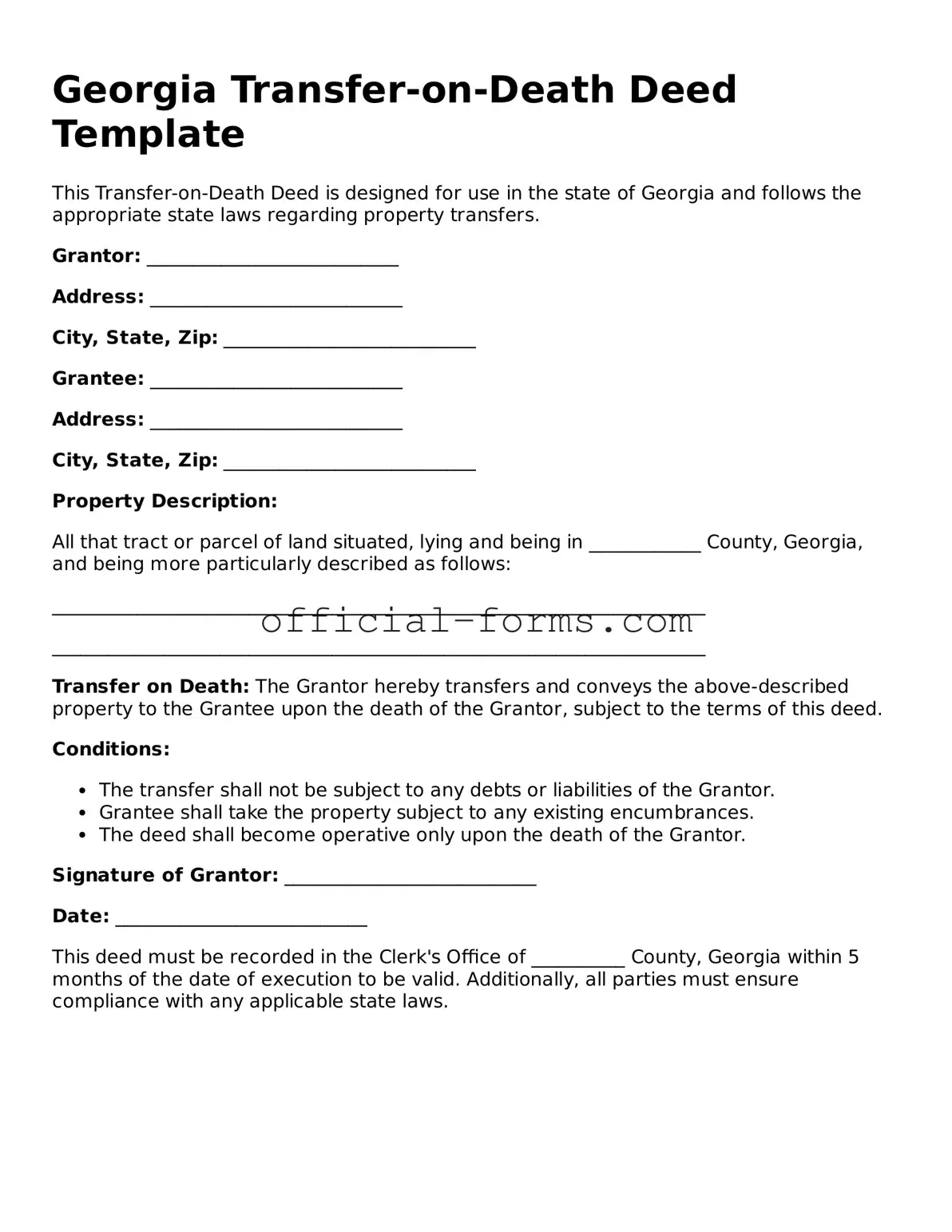Filling out a Transfer-on-Death Deed (TODD) form in Georgia can be a straightforward process, but many individuals make common mistakes that can lead to complications down the line. Understanding these pitfalls can help ensure that your intentions are honored without unnecessary legal hurdles.
One frequent error is failing to properly identify the property. It’s essential to provide a clear and accurate description of the real estate involved. This includes the property’s address and legal description. Omitting this information or providing vague details can lead to confusion and may render the deed invalid. Always double-check that you have the correct information before submitting the form.
Another mistake occurs when people neglect to sign the deed in front of a notary public. In Georgia, a TODD must be notarized to be legally binding. Some individuals mistakenly think that their signature alone suffices. Without notarization, the deed may not be recognized, which defeats the purpose of establishing a transfer of property upon death.
Moreover, individuals often overlook the importance of naming beneficiaries correctly. It’s vital to ensure that the names are spelled accurately and that the relationship to the property owner is clearly stated. In some cases, people might use nicknames or abbreviations, which can lead to misunderstandings or disputes among heirs. Always use full legal names to avoid any potential issues.
Another common oversight is not recording the deed with the county clerk’s office. Even if the deed is completed and signed, it must be filed to be effective. Failing to record the deed means that the transfer may not be recognized, leaving the property in limbo. It’s crucial to take this final step to ensure that your wishes are legally documented and enforceable.
Lastly, many individuals forget to review the implications of the TODD on their overall estate plan. A Transfer-on-Death Deed can affect how other assets are distributed. It’s wise to consider how this deed fits into your broader estate planning strategy. Consulting with a legal expert can provide clarity and help avoid unintended consequences.
